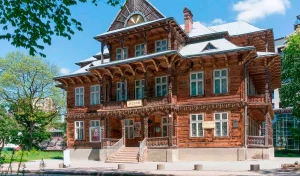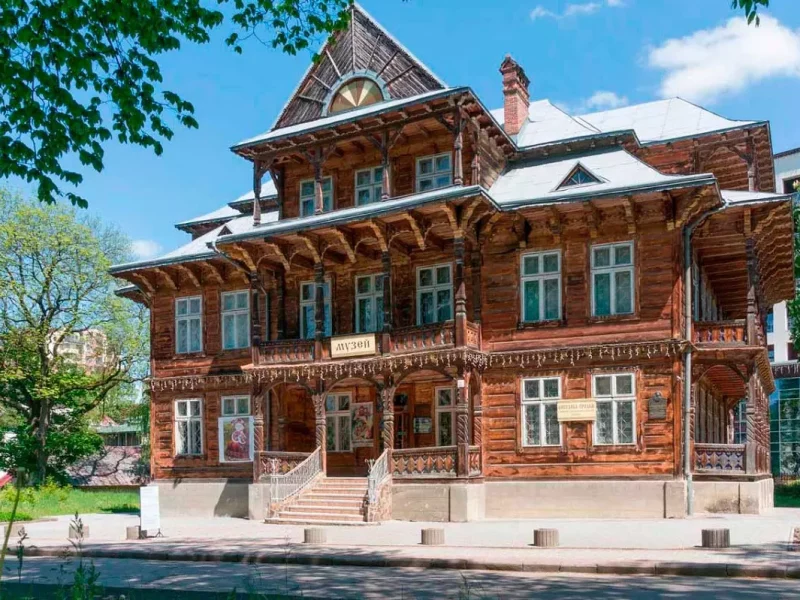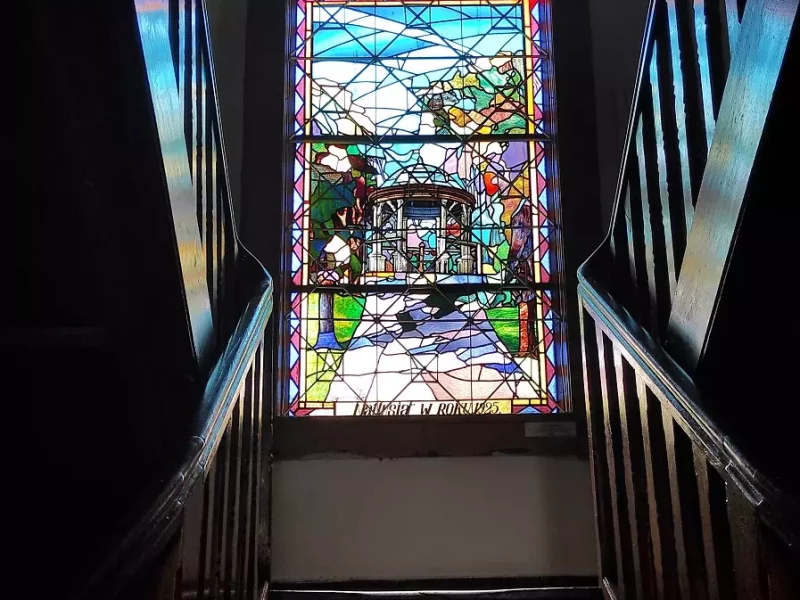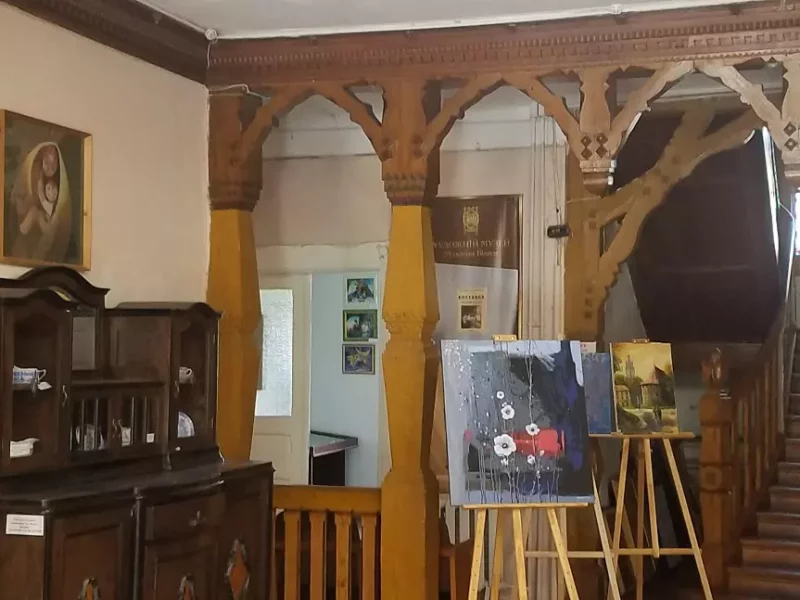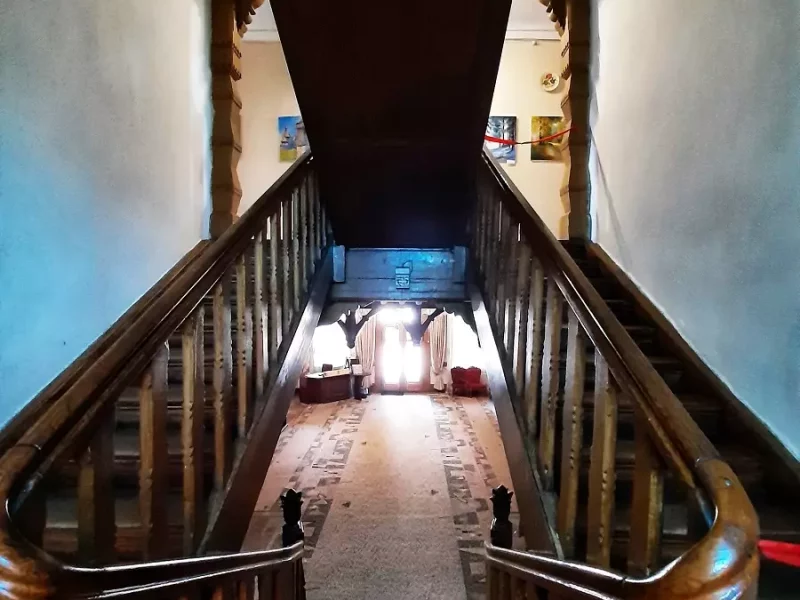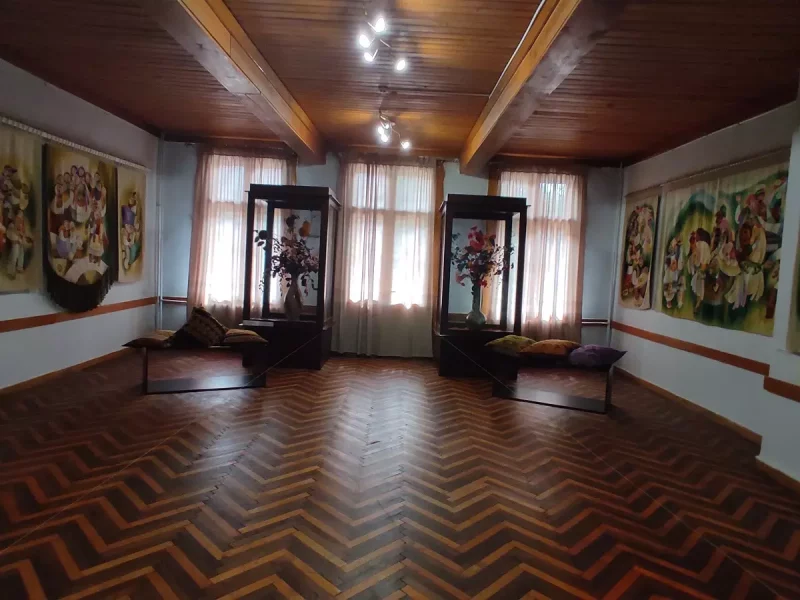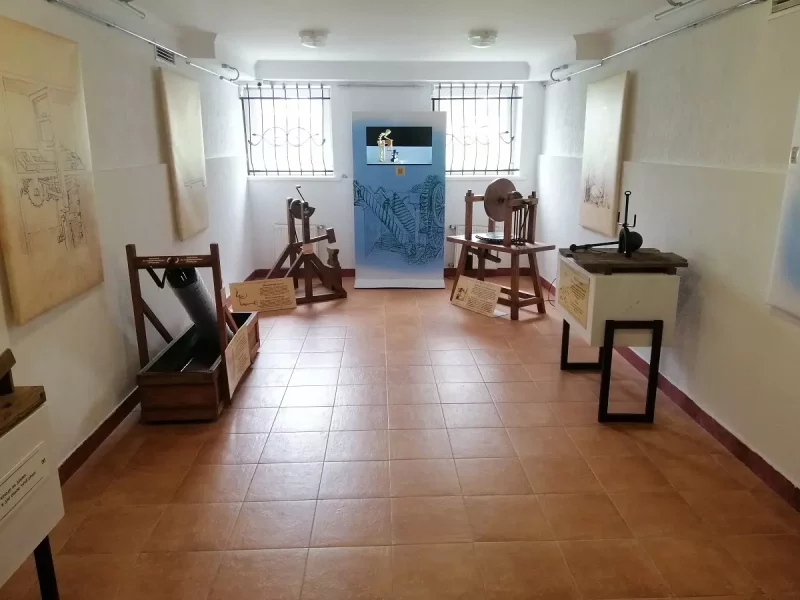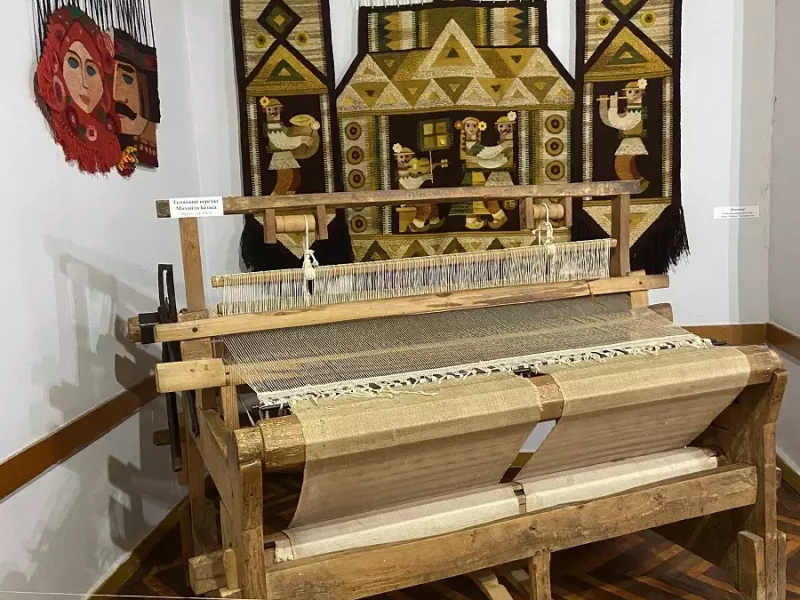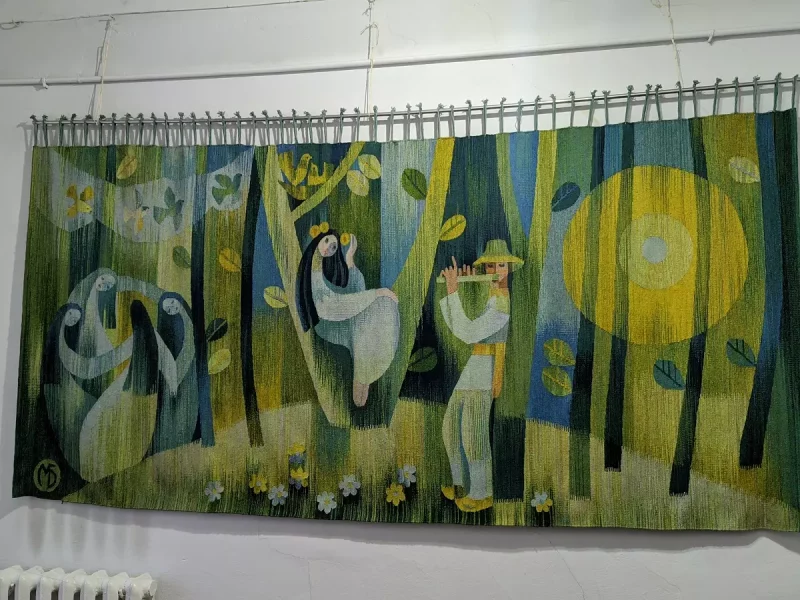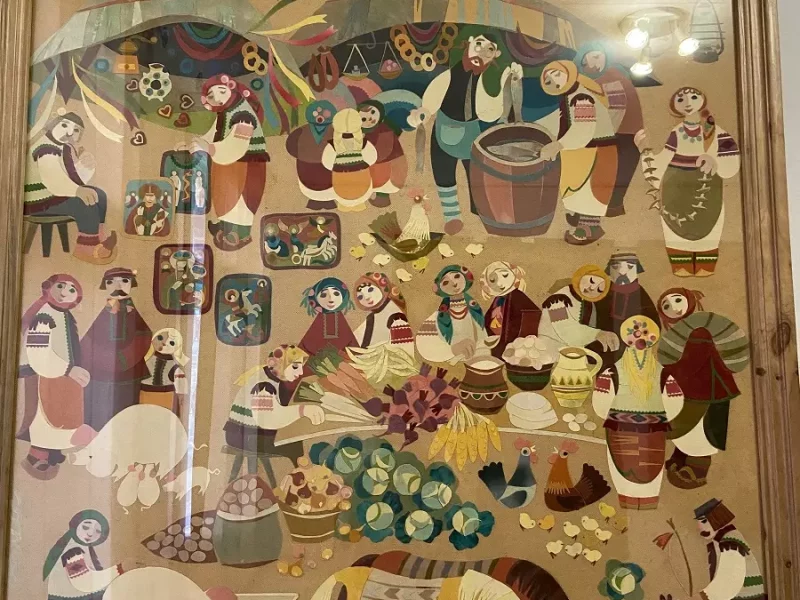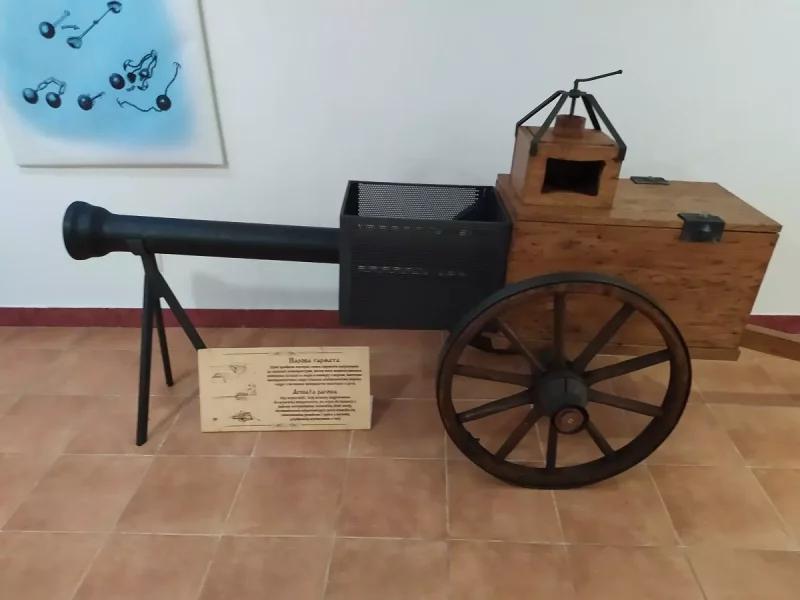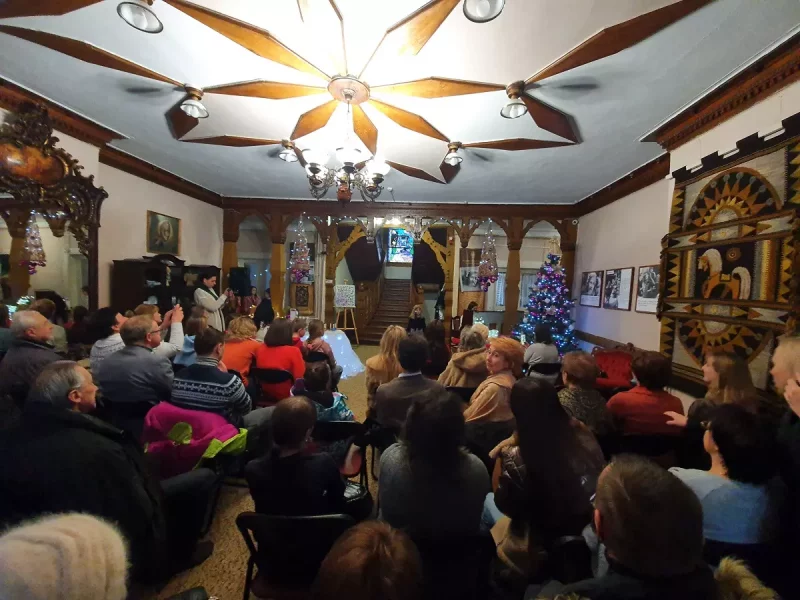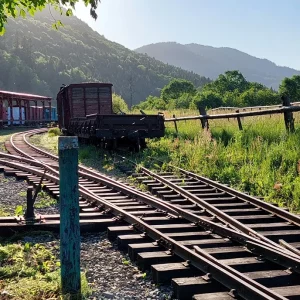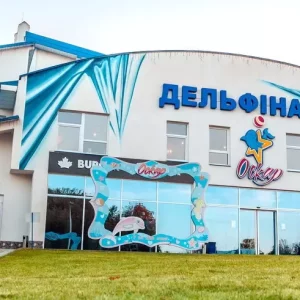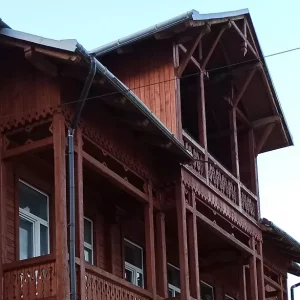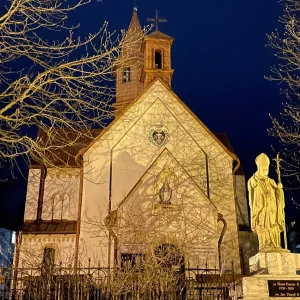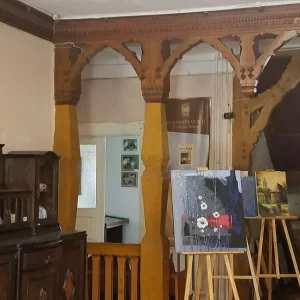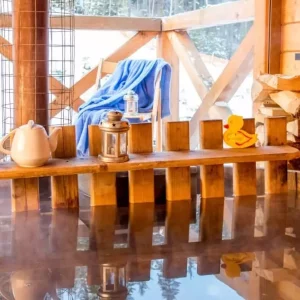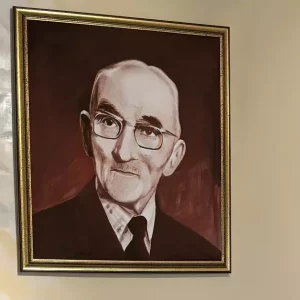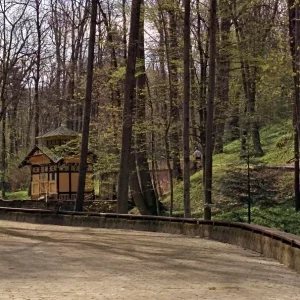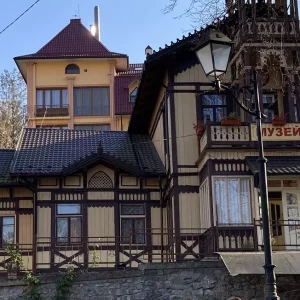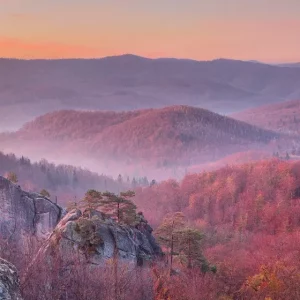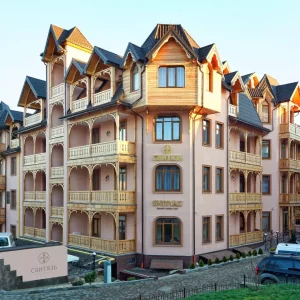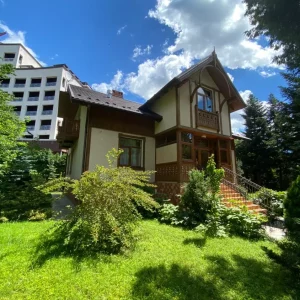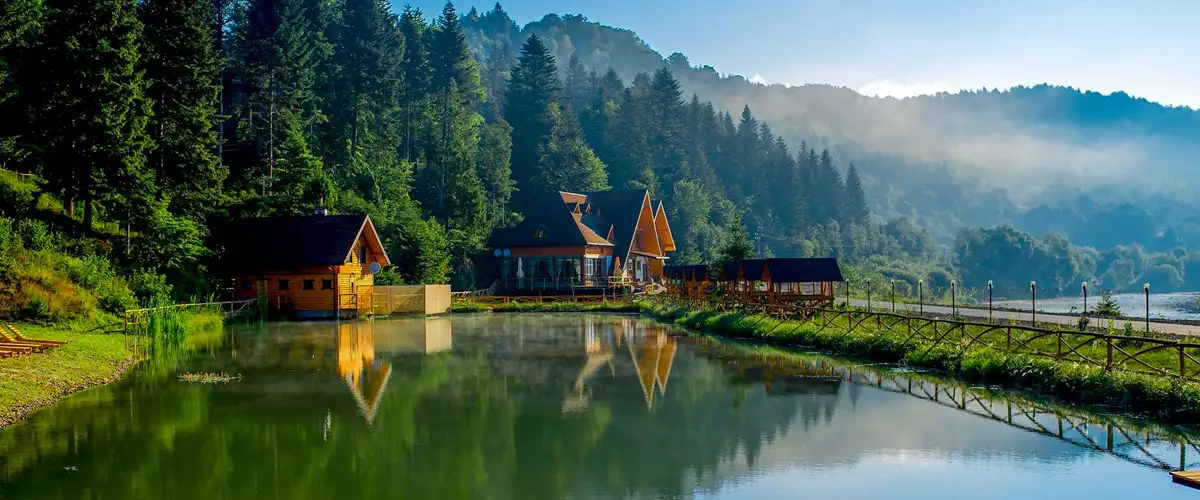A brief history of the museum building
Hoplyana is the only surviving wooden villa of log construction in Truskavets. It was built without a single nail from hewn spruce logs, which are connected by means of cuts. The ground floor foyer is decorated with an original stained glass window depicting the old pavilion over the Naftusya spring. It was made in the workshop of Stanisław Żelenski in Krakow in 1925 and restored in 1976.
The first owner of this villa was Raimund Jarosz, who served as the chairman of the Truskavets Springs Resort Joint Stock Company in 1911-1936. He was also the mayor of Drohobych. In the 1930s, Raimund Jarosz used this villa as his residence. The US ambassador to Poland, the president of Turkey, the president of Estonia, Konstantin Päts, and many other distinguished guests visited him here.
In 1939, this house was nationalised. During the Second World War, the villa was used as a hospital. Until 1949, the basement of this architectural masterpiece was used for bottling Yuzya mineral water. In Soviet times, Villa Hopliana was originally used as a dormitory building for a sanatorium.
Later, in 1973, it was used as an administrative building for the resort’s management.
In 1980, by a decision of the Lviv Regional Council of People’s Deputies, Villa Hopliana was granted the status of an architectural monument. Subsequently, the status of an architectural monument was confirmed by the Truskavets City Council in 1981 and 2008.
After Ukraine gained its independence in 1992, the villa was transferred to the city community. In the same year, on 19 December, on the day of St Nicholas the Wonderworker, the Mykhailo Bilas Art Museum was opened in the former Villa Hopliana. This is the first museum in Ukraine dedicated to the artist during his lifetime.
